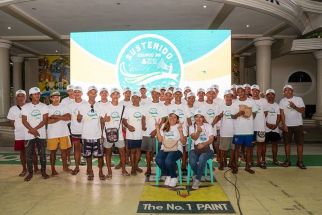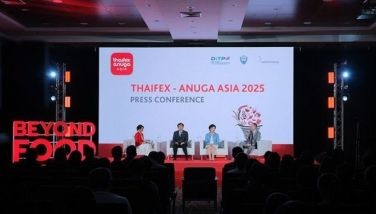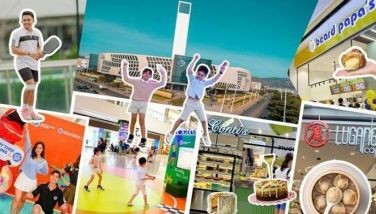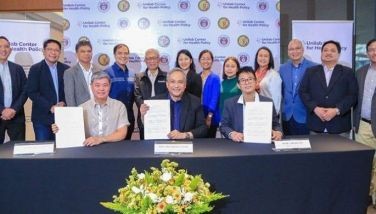Hokkaido

(First of two parts)
My husband and I have always loved traveling to Japan because it is the safest, most efficient, environmentally-friendly, cost-effective and delicious foodie country to visit.
Most of the time, we visit the popular golden triangle destinations of Tokyo, Kyoto and Osaka on the main island of Honshu, as well as the increasingly vibey city of Fukuoka on Kyushu island. The attraction, of course, has always been about finding the latest technology, innovation, fashion, products and food.
Thus, this time around, it was time to try something new and venture out to the northernmost and second-largest island of Japan — Hokkaido — to experience its pristine environment. The island is more popular as a winter destination for skiing, and in summer for its more temperate climate and the beautiful blooming fields of lavender, colorful flowers, vegetable crops, rice, wheat and corn.
Hokkaido’s agriculture, forestry and fisheries supply approximately 20 percent of domestically supplied calories, significantly contributing to a stable food supply in Japan.
As I am not exactly partial to very cold weather and snow, nor do I fancy Japan’s hot summer, we chose to visit Hokkaido just as the weather transitioned from the hot summer to the much cooler autumn. This also happens to be a low season for tourists at the normally popular destinations of Sapporo, Otaru, Nakafurano or Furano and Biei.
Mid-September, it turns out, is a low season for tourists since the peak summer bloom of flowers and lavender fields is best seen in July. Thus, when we arrived, most of the flower and vegetable fields that produce a variety of crops including sugar beets, potatoes, adzuki beans, squash, corn, rice and wheat had already been harvested. The positive side was that the attractions were less crowded.
The colorful summer patchwork of vegetable fields were now freshly plowed shades of brown, beige and tans. However, the green summer leaves of the deciduous trees had not yet started turning into their rich, vibrant autumn colors, but the early morning and late afternoon temperatures dipped to a pleasant, cool 16 to 22 degrees.
Unfortunately, the weather can also be variable at this time, and light rain showers can be a damper. However, lucky for us, the sun god was smiling as we visited the port city of Otaru, which lies northwest of Sapporo on Ishikari Bay, and is easily accessible by the JR Train.
Otaru is known for glassworks, music boxes and sake distilleries. Nishin Goten (herring mansion), a former fish processing plant built in 1897, reflects the industry’s key role in the city’s earlier years. Completed in 1923, the relatively short Otaru Canal is now lined with cafes and shops in converted old warehouses. It is also the best place to enjoy, at a reasonable price, steamed fresh king crab fished out of holding tanks and the huge, plump Hokkaido oysters.
The area, which is near where cruise ships dock, also offers a number of ice cream shops that sell Hokkaido’s famous milk ice cream in a variety of flavors, further complemented by the sweet and juicy Furano melons.
On another equally sunny day, we were lucky to book a day trip to Furano, passing along the way through the once prosperous coal mining city of Mikasa, which has since declined with the phase-out of coal, shifting from railroad industries to semiconductor manufacturing.
The shift to the production of semiconductors has not prevented the decline in the population of Mikasa, which is now down to 8,040 people. The city is a shadow of the once vibrant boomtown that, due to its prosperity from coal mining and the pollutive railroad industries, qualified to become a city.
According to our tour guide, the fertile farms around the area are facing a crisis with the younger generation unwilling to follow their parents and instead heading to the cities, while the men who decide to stay face a dearth of women. It is now common for male farmers to actively advertise for “wives,” offering a variety of incentives such as cars and paid vacations.
Another town we passed has experienced such a significant decline in its birth rate that a newly built school with a well-equipped observatory had to close when its student population dropped to just 15 students.
Our trip to Furano allowed us to visit a local winery and enjoy a nice lunch of a petite fondue of locally produced cheese and the best Salisbury steak I’ve ever tasted (a fancy term for hamburger steak) with a sweet but delicious wine sauce produced from grapes grown in the area.
After lunch, we passed the Tokachi agricultural valley that lies at the foot of the mountain range where the smoking volcano, Mt. Tokachidake, is located.
Mt. Tokachidake is an active volcano located in Daisetsuzan National Park. It is the tallest volcano of the Tokachi Volcanic Group, with a height of 2,077 meters. It is one of the 100 famous mountains in Japan. There are four hiking trails to the peak of Tokachidake.
Our destination, Farm Tomita in Furano, and Shikisai-no-Oka or Four Seasons Hill in Biei offered us a glimpse of the famous lavender and flower fields of tulips, lupine, salvia, sunflowers, dahlias and Japanese anemones, even though we missed the peak bloom in July when almost all of the fields are in full bloom.
The thing with viewing lavender and flower fields on a sunny day, when the temperature can still hit a warm 28 degrees, is that it’s great to get that money shot and video, but make sure to hightail it right away to some shade. Lucky for us, we had spotted an udon restaurant and treated ourselves to one of the best cool udon salads I have ever tasted in Japan.
We passed the equally famous Roller Coaster Road, which follows the hilly terrain of the area. Our tour guide interestingly pointed out two trees that became iconic in Biei — the white poplar tree called Ken & Mary Tree in Patchwork Road that was popularized in a 1972 Nissan advertisement and has remained standing and healthy for the past 40 years. The other iconic tree is an oak tree that was used in a famous advertisement for the Japanese tobacco brand Seven Stars.
Our last itinerary before heading back to Sapporo was to see the famous Blue Pond, so called because its water contains aluminum, which gives it a unique blue color. However, the Blue Pond is man-made and was the result of works on the Biei River, carried out after the 1988 eruption of Mount Tokachidake to protect the town of Biei from volcanic mudflows.
(To be continued)
- Latest
- Trending


























